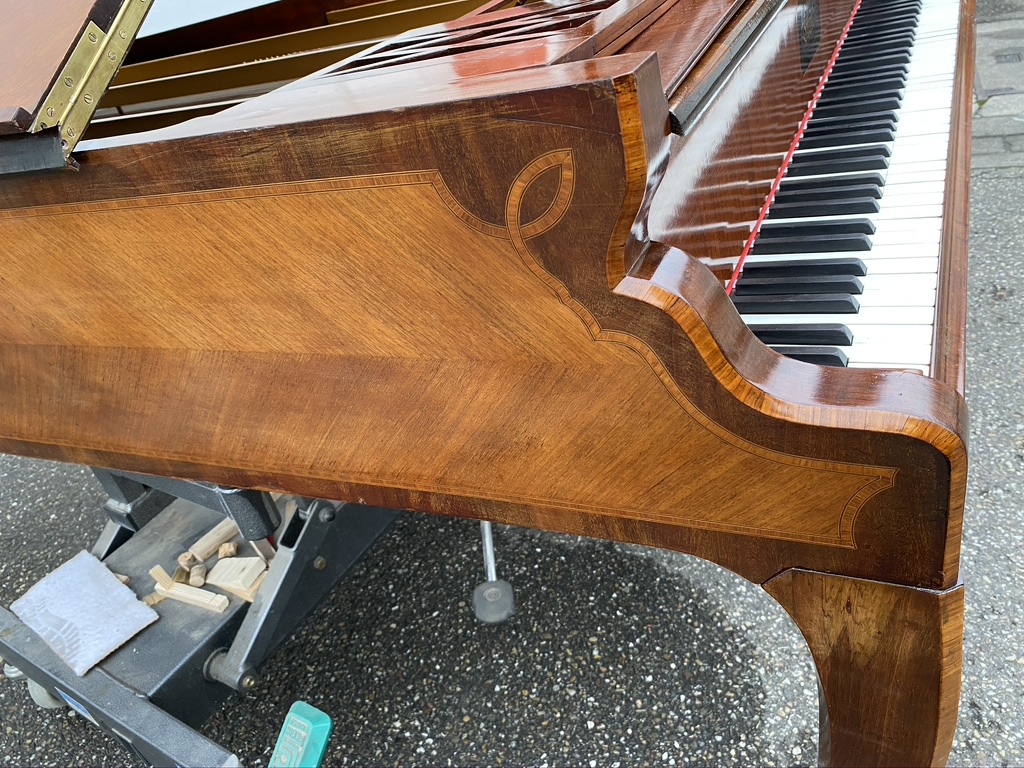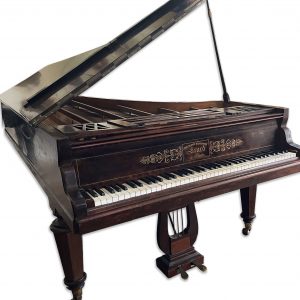Erard Art Case by Mercier Frères Paris.
Erard Paris Art cased grand Case designed by Mercier Freres Paris. Serial number 19924 was originally finished in 1847, casework redesigned and finished in 1877
The Pre-Cites Permit is available.
Description
Designed by Mercier Freres Paris with a design specified by order.
Restored by our German master team.
Having a piece of furniture done by the famous furniture designer of Mercier Freres is a dream, having a piano designed by them was something not quite expected. Case is patterned pieces of high quality mahogany ending on three lion claw type feet in bronze mercure. Piano is currently under full restoration by the Palace Pianos team. Each part is taken care of in order to preserve the authenticity.
Mercier Frères The firm known from 1867 as Mercier Frères was established in 1828 by Claude Mercier with premises at 15, Rue Beautrellis. Moving shortly afterwards to 100, Rue du Faubourg Saint-Antoine, where it remained until its final demise in 1986, the firm exhibited at the Exposition des produits de l’industrie française in 1844 and 1849, and participated in most of the major International Exhibitions of the latter half of the century. Mercier Frères was a distinguished French design studio and furniture manufacturer. It was one of the leading French design firms of the late 19th century and well into the 20th. In 1924, Mercier Frères was chosen to represent France in the Exposition Française de New York, an important trade fair that was held in the Grand Central Palace.
The first records show us the piano was first purchased by famous Cellist, Alexander Batta. Batta played in the most respected salons, such as Delphine de Girardin and Pierre-Antoine Berryer , and toured extensively throughout Europe. His own preference was for the great French and Italian operas. He especially admired the operas of Vincenzo Bellini and especially the tenor Giovanni Battista Rubini , whose singing style he adapted as a model for his cello playing. In addition, Batta wrote a number of compositions, mostly for his instrument with piano accompaniment, and transcribed musical works by others for the cello. Often these were paraphrases or fantasies of operatic melodie.
Second records show the redesigning of the piano by order for the owners in 1877
Piano is currently under restoration work
You must be logged in to post a review.





















Reviews
There are no reviews yet.